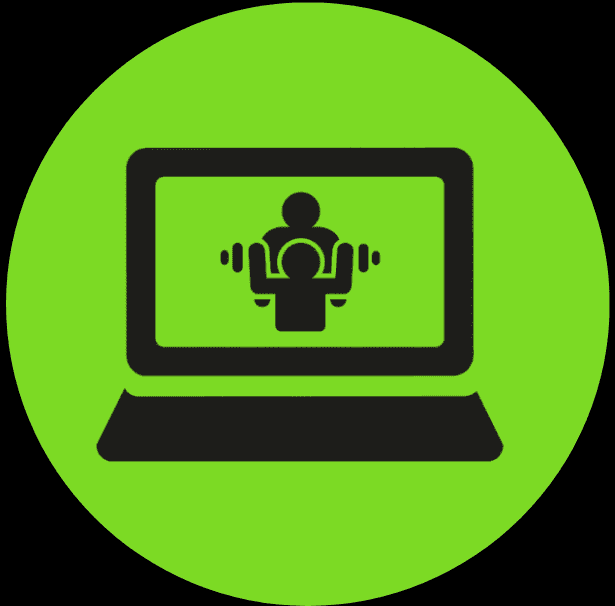Are you new to fitness and looking for ways to improve your diet and achieve your fitness goals? One of the most effective ways to do this is by tracking your macros. In this beginner’s guide, we’ll take a closer look at what macros are, why they’re important, and how to track them.
What Are Macros?
Macros, short for macronutrients, are the three main components of your diet: carbohydrates, proteins, and fats. Each of these macronutrients plays a unique role in fueling your body and supporting your overall health.
Carbohydrates are your body’s primary source of energy, and they’re found in foods like fruits, vegetables, grains, and legumes. Proteins are essential for building and repairing muscle tissue, and they’re found in foods like meat, fish, eggs, and dairy products. Fats are important for maintaining cell health, regulating hormones, and providing energy, and they’re found in foods like nuts, seeds, oils, and avocados.
Why Are Macros Important?
Tracking your macros is important for several reasons. Here are some of the key benefits of tracking your macros:
- Greater control over your diet: By tracking your macros, you’ll be able to ensure that you’re getting the right balance of nutrients that your body needs. This can help you achieve your fitness goals more efficiently and effectively.
- Better recovery and muscle growth: Protein is essential for muscle recovery and growth, and tracking your protein intake can help you make sure you’re getting enough to support your fitness routine.
- Improved energy levels: Carbohydrates are a key source of energy for the body, and tracking your carb intake can help ensure that you have the fuel you need to power through your workouts.
- More sustainable diet: By tracking your macros, you can make sure that you’re not depriving yourself of any important nutrients, which can make your diet more sustainable over the long-term.
How to Track Your Macros
Now that you understand the importance of tracking your macros, let’s take a look at how to do it. Here are the basic steps for tracking your macros:
- Calculate your macro needs: The first step in tracking your macros is to calculate how much of each macronutrient you need each day. There are several online calculators and apps that can help you do this, or you can work with a registered dietitian or personal trainer to determine your macro needs.
- Choose a tracking method: There are several different ways to track your macros, including using a food diary, a mobile app, or a spreadsheet. Choose the method that works best for you and make sure to track everything you eat and drink throughout the day.
- Monitor your progress: As you track your macros, keep an eye on your progress and make adjustments as needed. For example, if you’re not seeing the results you want, you may need to adjust your macros to better support your goals.
Tips for Success
Here are some additional tips to help you succeed in tracking your macros:
- Plan ahead: To make tracking your macros easier, plan out your meals and snacks in advance. This will help you stay on track and avoid making impulsive food choices.
- Be consistent: Tracking your macros is most effective when you do it consistently, so make sure to track everything you eat and drink every day.
- Use a food scale: Measuring your food with a scale is the most accurate way to track your macros. You can purchase a digital food scale for relatively cheap and make sure to weigh your food to ensure your measurements are accurate.
- Be patient: Tracking your macros is a process, and it can take some time to figure out what works best for you. Be patient and persistent, and you’ll start to see the results you want.
Macro Tracking Strategies
There are several different macro tracking strategies you can use, depending on your goals and preferences. Here are some of the most popular strategies:
Flexible dieting: Flexible dieting, also known as “If It Fits Your Macros” (IIFYM), is a popular approach that focuses on hitting your daily macro goals without restricting any specific foods. This approach allows for more flexibility in food choices while still ensuring that you meet your macro needs.
Carb cycling: Carb cycling involves alternating between high-carb and low-carb days to help you reach your fitness goals. On high-carb days, you eat more carbohydrates to fuel your workouts, while on low-carb days, you eat fewer carbs to encourage fat loss.
Keto: The ketogenic diet is a high-fat, low-carb diet that is designed to encourage your body to enter a state of ketosis, where it burns fat for fuel instead of carbohydrates. This diet is popular among people looking to lose weight or improve their overall health.
Zone diet: The Zone diet involves dividing your plate into three sections: one-third protein, two-thirds fruits and vegetables, and a small amount of healthy fats. This approach is designed to balance your blood sugar levels and keep you feeling full throughout the day.
How to Use Macro Tracking to Achieve Your Fitness Goals
Now that you understand the basics of macro tracking, let’s take a closer look at how to use this technique to achieve your fitness goals. Here are some tips to help you get started:
- Determine your goals: Before you start tracking your macros, determine what your fitness goals are. Do you want to lose weight, gain muscle, or improve your overall health? Knowing your goals will help you determine how many macros you need to eat each day.
- Find your ideal macro balance: Once you know your goals, use a macro calculator to determine your ideal macro balance. This will tell you how many grams of carbs, protein, and fat you need to eat each day to achieve your goals.
- Track your progress: As you track your macros, keep an eye on your progress and make adjustments as needed. If you’re not seeing the results you want, you may need to adjust your macros to better support your goals.
- Combine macro tracking with exercise: Macro tracking is most effective when combined with regular exercise. Make sure to incorporate strength training and cardio into your fitness routine to help you achieve your goals more quickly.
- Stay motivated: Tracking your macros can be challenging, but staying motivated can help you stick with it. Find a workout buddy, join an online fitness community, or hire a personal trainer to help you stay accountable and motivated.
Conclusion
Tracking your macros is an effective way to improve your diet and achieve your fitness goals. By understanding what macros are, why they’re important, and how to track them, you can make better food choices and fuel your body more effectively. Whether you’re new to fitness or a seasoned pro, macro tracking is a valuable tool that can help you achieve your fitness goals and improve your overall health. So why not give it a try and see what a difference it can make in your life? And if you need further guidance and support, consider joining our 90 Days Better You Programme for personalized coaching and guidance to help you achieve your fitness goals.








0 Comments